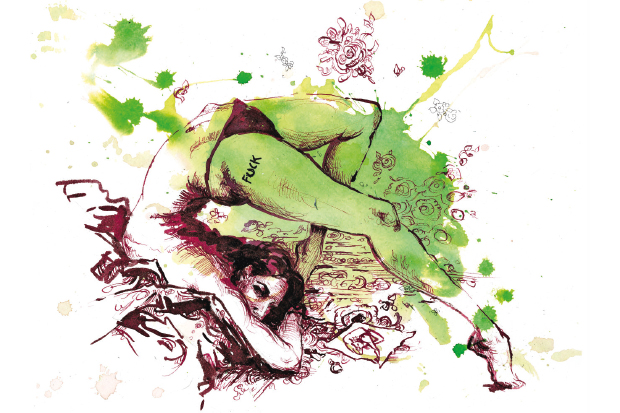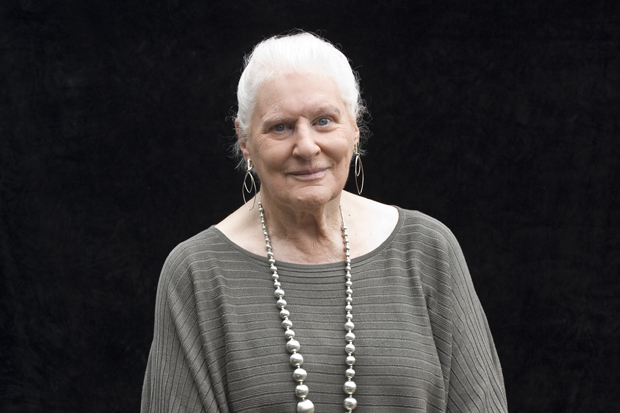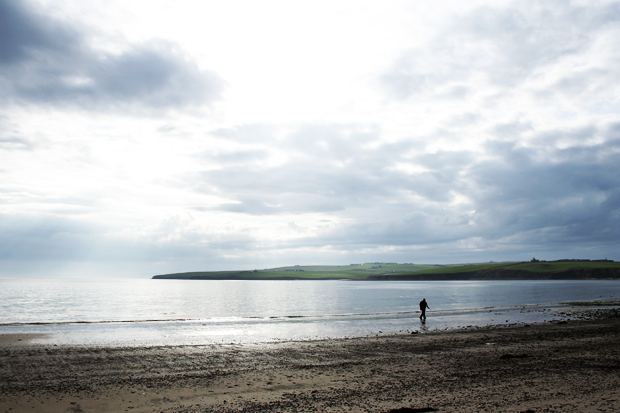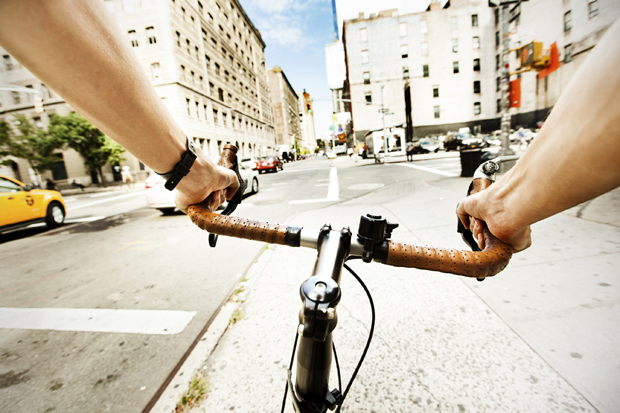Molly Crabapple is an American artist and Drawing Blood is the story of her life. That life has only been going on since 1983, but despite its author’s relative youth Drawing Blood is a valuable political document. It tells of a life lived in struggle — against the prospect of going dead broke, against gross misogyny within the arts and against sex workers, against the obscene wealth splattering the fine art business — redeemed by intoxicating levels of exposure, then finally reoriented by a new political consciousness.
Crabapple describes an artistic childhood followed by a pretentious adolescence spent performance-reading Nietzsche and hating everybody. Bored of America, the teenage Crabapple goes on holiday to Paris and Turkey. This section won’t sit so well with readers outside the US, who find it hard to thrill to the adventures of Americans travelling for the first time, especially when the thrill consists of being a jobless American lolling on the Shakespeare and Co. cots. But as Crabapple ages, and sees through the exceptionally delinquent men who at times travel with her, her awareness grows.
As a young adult, she begins to hustle her way into a career as an artist and an alternative model in pre-crash New York City. Studying at a medium-to-indifferent college, the Fashion Institute of Technology, she alternates between working as an art model and a burlesque performer, and observing the bodies of others as an artist. This is by far the most valuable section of the book. Her acute sense for opportunities for solidarity between the marginalised and the broke colours her recollection of the ‘burlesque revival’, which lost so much of its political sheen in the course of becoming mainstream.
Crabapple’s stories of friendships made and broken with other ‘naked-girl’ professionals are moving, while her tales of in-house drawing work at a notorious nightclub, the Box, are rife with delicious gossip. The Box’s co-proprietor Simon Hammerstein comes off as an individual of unbelievable mediocrity. The nightclub itself came to symbolise the most grotesque form of recreational spending in pre-crash New York City, but also saw the transformation of burlesque from underground art into the most aspirational form of classic nightclub glamour.
In the third section of the book several other writers and artists get a lot of space: the activist/journalists Laurie Penny and Natasha Lennard, and the porn actress Stoya among others. This section describes how Crabapple and her work were politicised by the financial crash and the various subsequent protest movements, most importantly Occupy. It is so concerned with citing the influence of Crabapple’s (presumably current) friends that her own voice gets slightly occluded. She writes about sex work and the meaning of hustle with a keenness that seems more politically important than any UK Uncut rally.
There remains the question of Crabapple’s actual work. She considers the relationship of her work to fine art and to illustration at one point in the book, but doesn’t care much for the distinction. Some readers may find this confusing, since her work seems so definitively in the tradition of decorative ink illustration. It’s relentlessly figurative, and as Crabapple has become more directly political her work has taken on the satirical narrative force and bite of Goya’s ‘Caprichos’ or Gillray’s cartoons.
Indeed, Crabapple’s work is best viewed in the light of satirical illustration, since, without that context, her artfully-placed inkblots can read as decorative to the point of affectation. Her sketches sometimes look as if they’ve been put through a ‘Victorian notebook’ Instagram filter. For these reasons her detailed, allegorical large-scale paintings are by far her finest productions. The Shell Game collection is a very serious work.
In short, this autobiography would make thrilling reading for a youngcountercultural artist or a person in need of educating on the politics of sex work and erotic performance art. Drawing Blood is not a deeply considered text on the visual arts, but it is a deeply considered text on the life of one young woman, making a certain kind of history.
Got something to add? Join the discussion and comment below.
Get 10 issues for just $10
Subscribe to The Spectator Australia today for the next 10 magazine issues, plus full online access, for just $10.
Available from the Spectator Bookshop, £16.99 Tel: 08430 600033
You might disagree with half of it, but you’ll enjoy reading all of it. Try your first month for free, then just $2 a week for the remainder of your first year.














Comments
Don't miss out
Join the conversation with other Spectator Australia readers. Subscribe to leave a comment.
SUBSCRIBEAlready a subscriber? Log in